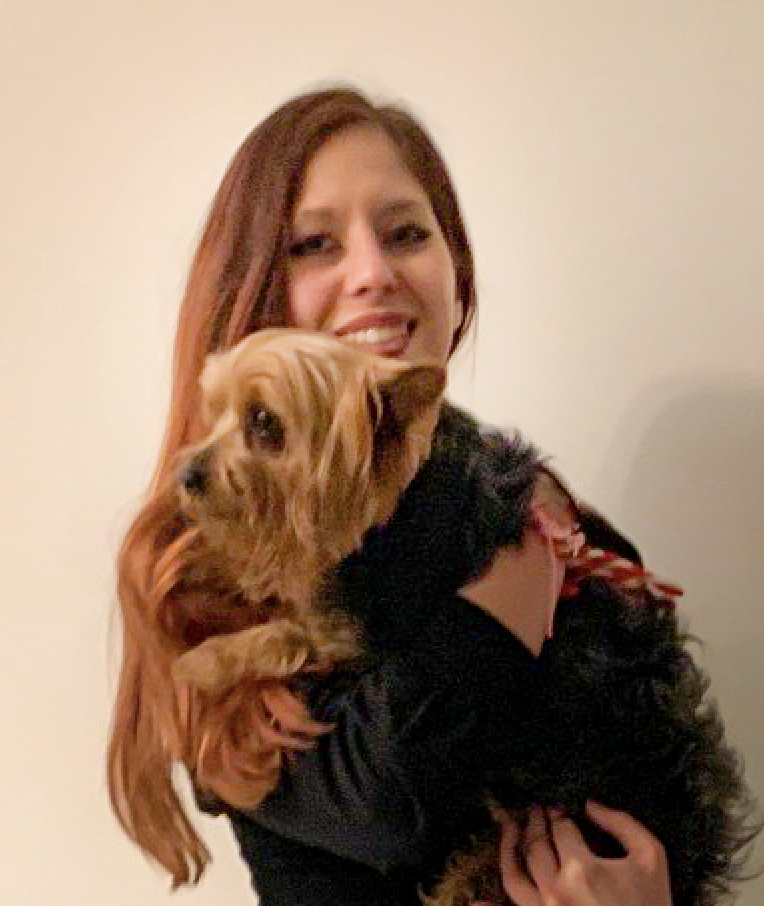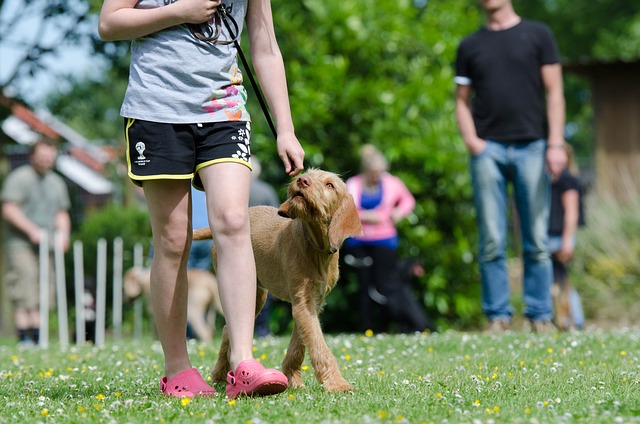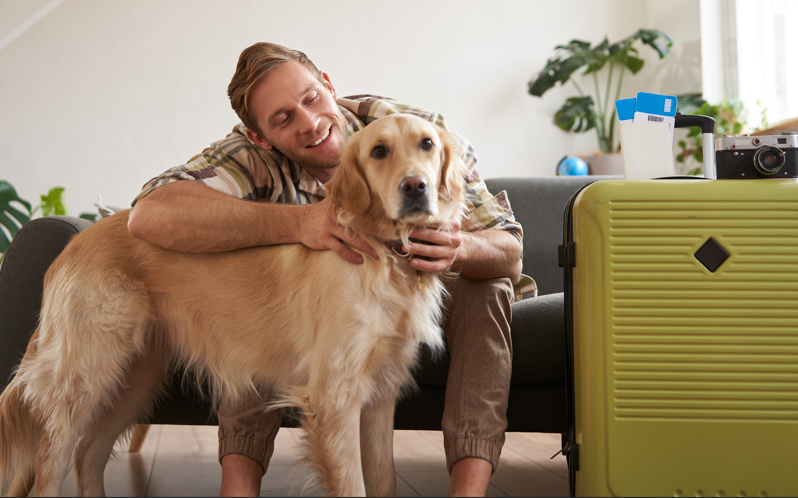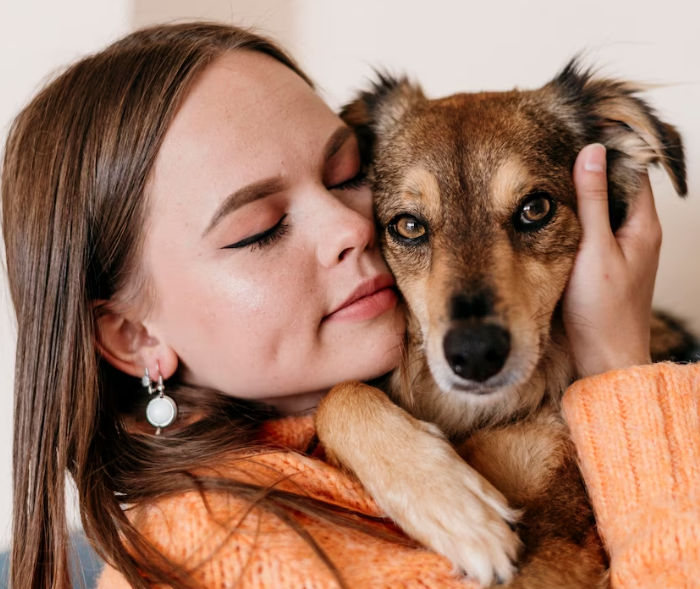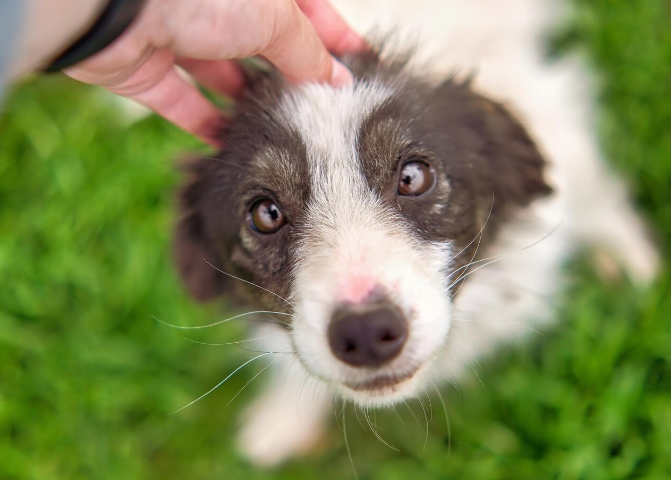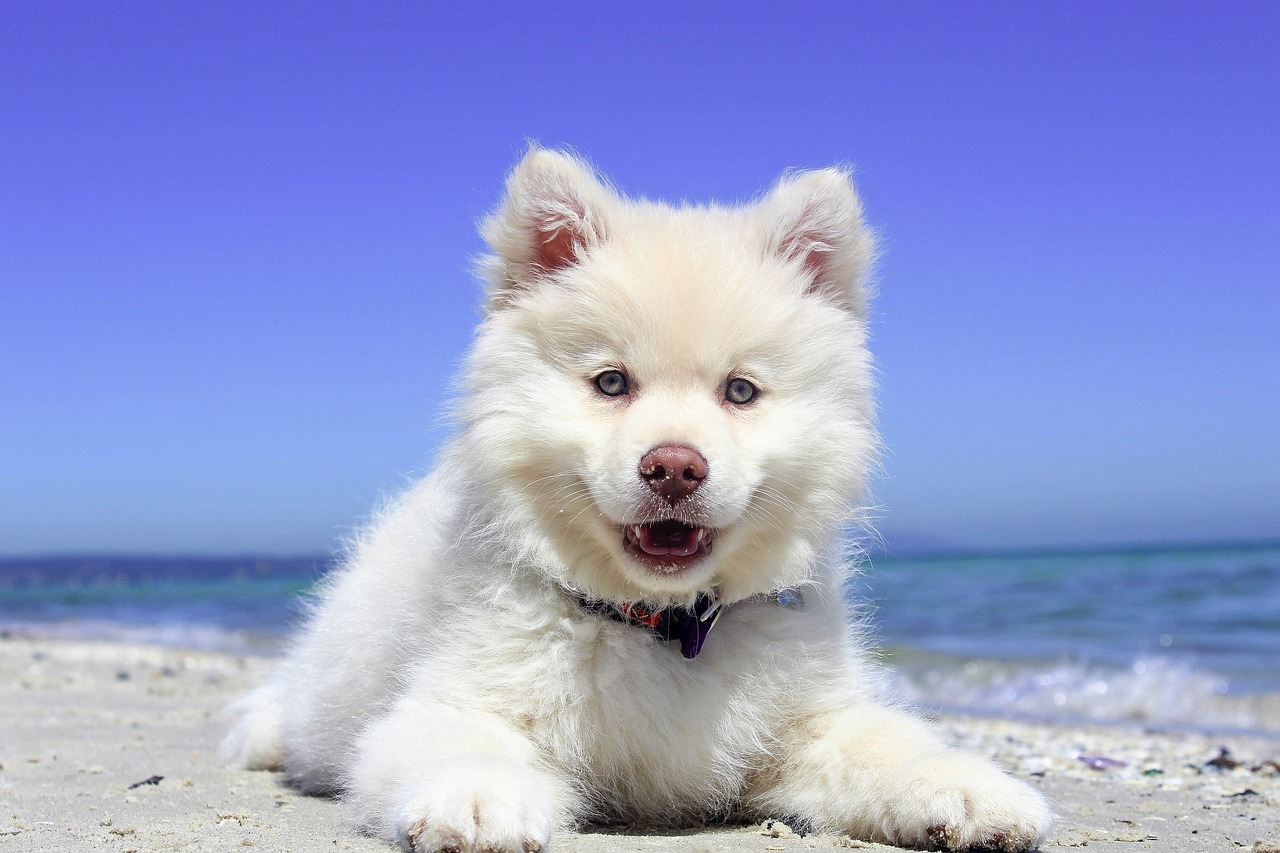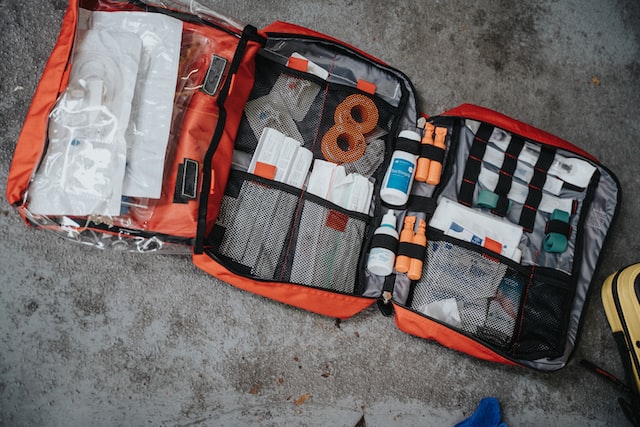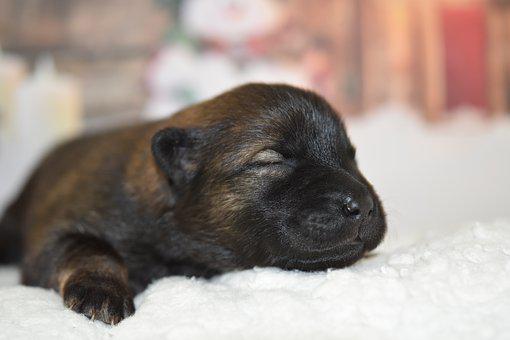
Getting a new pup is related to feelings of excitement, joy, love, a bit of stress maybe and requires a lot of preparation! Having a pup, means that you have to be prepared to provide an environment that is safe, secure and loving. In order to do that, you need to have a set of skills as a good owner, as well as proper organization and supplies.
If you are thinking about getting a pup, or you already have one, but you are still struggling with the most essential things you will need to have to properly take care of your paw friend, our must-have checklist for puppy owners may help you. We will start our list with the most important thing, which is also usually the biggest motivator for dogs-food.
Food & Treats
You should remember, that food for pups is different from food for adult dogs. Since pups are still growing, they need more calories, thus food that is higher in fat as well as protein and vitamins. Usually, pups have a big appetite, since their bodies demand a lot of energy to properly develop their organs, bones and fur. It is recommended that you consult a veterinarian as they can advise you on the healthiest diet based on your pup’s age, breed and lifestyle.
Another thing that differentiates pup’s food from food for adult dogs is its size. The size of kibbles for puppies is smaller than the size of kibbles for adult dogs, as it provides pups with comfort during feeding.
We also have listed “treats” in this section, as they play an essential role for pup raising. They are not only a useful training tool, as most dogs are food-motivated, but they contribute to the bond between an owner and their paw friend. As you may know, that stronger the bond is, the easier the training process will be. This is especially valid for service dogs, who need to get attuned to their users/handlers.
Logically we move to the next point:
Food & Water Bowls
There are various models on the market, based on the material, width, depth and design. We would recommend that you opt for a water bowl that is deeper so that your pup feels comfortable while drinking. When it comes to the material of the bowls, you can choose between bowls made of ceramic, glass, stainless steel, or plastic. Some materials are less expensive. i.e. plastic. However, over time limescale is likely to build up, and you may need to use vinegar, sink the bowl, wipe it and rinse it to remove the scale. On the other hand, plastic bowls are harder to break, which is not the case with bowls made of glass or ceramic.
Ceramic bowls are more expensive and easier to clean. If you opt for that option, you may need to make sure that the material is lead-free. Lead has not been fully removed from production of all ceramic glazes. Also, it is important to note that ceramic can be only cleaned if its coating remains unimpaired.
Glass bowls can be cleaned easily, however, you will need to regularly check them for cracks to make sure that your paw friend will not get hurt while eating or drinking water. Bowls made of stainless steel get more and more popular, as they are robust, safe (they do not corrode) and are easy to clean. They are more expensive, but will last for a long time and will spare your nerves on cleaning them.
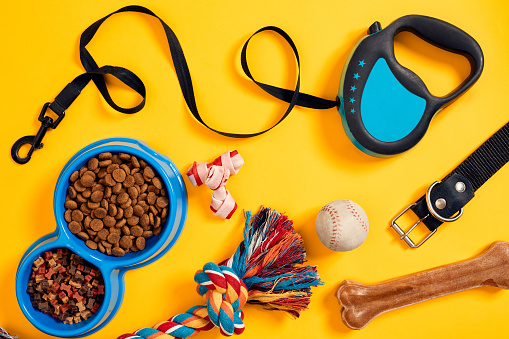
Crate & Confinement
A crate will provide your pup with a safe zone, where you will be able to monitor him/her. Having a crate has many advantages i.e.: your pup will have his/her own spot, where he/she can rest, play and eat (you can put treats inside the crate); having his/her own spot will help him/her easier adapt to the new environment (also if you move to a new home); crate training is a part of house training, which will help you teach your dog when it is time to eat, walk, play...etc. Setting up a routine will prevent your pup from developing bad habits. Another advantage of crates is the opportunity they provide to transport your doggy, i.e. if you need to bring him/her to the vet. Of course, you can have separate carriers based on their purpose.
There are many models on the market-with hard sides or soft sides, with one or two exits, made of stainless steel, plastic, fiberglass...etc. The hard-sided carriers are for a lifetime, however, they are not as cozy as those made of lightweight plastic. It is important that you choose a carrier, that gives your pup with enough space to stand up and change his/her position (turn around, stretch).
Exercise pens and baby gates are an alternative that provides your dog with his/her own space. They can be especially helpful if you are unable to constantly watch over your pup, but want to make sure that he/she is safe and secure.
Bedding
Whether sleeping on a dog bed, or on a warm blanket/towel, your pup needs to feel comfortable. There are also various cushions, pillows, as well as beds filled with recycled materials designed to provide comfort to your pup and protect the environment.
In order to select a bed in the right size, you can measure your pup (from the nose to the tail and from one shoulder to the other), then you should add about 20-30 cm. The bed should not be too soft, as it will be unable to support your pup’s spine very well. If your paw friend is a kind of chewer, you may need to remove some part of the filling, to prevent him/her from swallowing a non-edible object.
Blanket & Towels
We have specified that your pup will need his/her own safe zone and a spot where he/she can rest and relax. Blankets/towels will add comfort to your pup’s area and will make him/her feel loved and taken care of. A blanket that has the odor of your pup’s siblings and mother will calm him/her down during the first several days in his/her new home.
Towels will also be needed, i.e. to dry your pup after bathing, or to cover the back seats in your car, and protect them from dirt. Also, you may need to use them to clean the house / around the house if your pup relive him/herself or makes a mess.
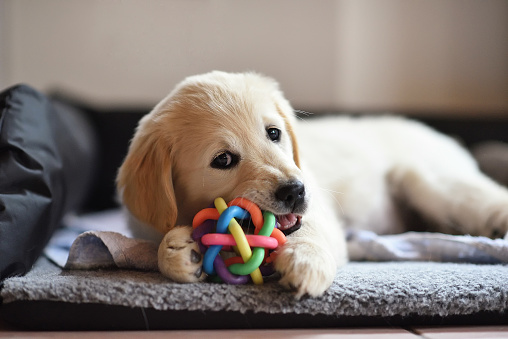
Leash and Collar
A leash will allow you to control your pup while outdoor on a walk and prevent him/her from jumping on people, dogs, chasing animals or otherwise being exposed to dangerous situations. The leash should be robust enough and made of a high quality material to last as long as possible. For your pup you may want to consider a shorter leash. There are many models whose size is adjustable. At some point, when your pup already knows basic obedience or is at least able to walk calmly alongside you, you may need to have such a model. Retractable leashes are no a good choice for owners, whose pups still can not behave properly on a regular leash and deal with some behavioral issues. Once your doggy learns to remain calm, you should give him/her some space to explore. For example, you can start with a leash 4 feet long and then move to a leash that is 6 feet long.
Having a collar is also as important as having a leash, as you can attach an ID tag featuring your phone number, your dog’s name or any information that may help you find your paw friend if he/she gets lost. A general rule for the right size of the collar is that there should be enough space between the collar and your dog’s neck (about two fingers). However, it should be neither too tight, nor too loose.
Talking about a collar and why it is really helpful, we logically move to the next point:
Identification
You may want to consider having an ID card, an ID tag, a microchip...or any identification for your pup. This may not only help you find your pup if he/she gets lost, but also help you meet all the requirements to travel with him/her abroad. Any information such as your name, your pup’s name, your phone number or the phone number of your pup’s veterinarian should be listed on the identification gear.
Microchips are very small devices that are implanted between the shoulder blades of dogs. Through a scanner they can be read and are used to provide identification information. Microchip implants are known as radio frequency identification tags. It is important to note, that the microchip itself does not track your pup. When scanned, it helps the pup to be located as it uses the GPS location of the phone that is paired with the device.
As mentioned above, dog identification will be required when traveling with your paw friend. You should always get informed in advance and check the regulations of the country of destination prior to traveling.
Supplies for Grooming & Hygiene
In this group can be included items such as a comb, a bristle brush, a shampoo (both a wet and a dry shampoo) a toothbrush, a toothpaste (the toothpaste should be specially designed for dogs), ear cleaning solution, cotton balls, nail clippers, a blow-dryer…etc. Based on the breed, your pup may need regular brushing/bathing to keep his/her coat maintained. You should not neglect his/her dental hygiene as well, as dental diseases can affect organs once they get into the bloodstream, if not treated in a timely manner. Toy breeds such as the Pug, the Toy Poodle, the Cavalier King Charles Spaniel, the Yorkshire Terrier, and the Chihuahua, are more prone to dental problems, than larger dog breeds.
Toys
Each pup needs to have a favorite toy! There are various toys that your pup will enjoy playing with-puzzle toys, fetch toys, plush toys (all kinds of stuffed animals), tug toys, chase toys... You can stimulate both your pup’s physical and mental health by providing him/her with the best toys depending on his/her age, breed and needs. Plush toys are recommended for pups to feel safe and secure as they help them adapt quickly to their new home.
When choosing the “right” toys for your pup, you should pay attention to the material (opt for sustainable materials of high quality, safe for dogs) and the size. If you notice that the toy is damaged and some parts are torn-off, you should remove them immediately. Otherwise, your pup may ingest them. If this is not possible, you would rather throw the toy away.
Poop Bags & Pee Pads
Cleaning after their dog is the responsibility of every owner. When you clean after your dog, you prevent other dogs to get infected with bacteria and parasites that have been transmitted through feces. Also, you will be able to see if there are any parasites on your pup’s feces and consult a veterinarian if such are present. For example tapeworms look like small pieces of white rice. Pee pads are also needed during the first weeks as your pup still learns where to relieve him/herself.
Medication
You should not forget to bring your pup to regular veterinarian checks and keep him/her up-to-date with all vaccinations. Monthly veterinarian visits are usually needed during the first six months. Your pup is likely to get vaccinated for rabies, distemper and parvovirus, hepatitis, parainfluenza. Once your pup becomes an adult dog (small breeds are considered adults by the age of 6-8 months, medium-sized and large breeds are considered adults by the age of 12-18 months, while extra large breeds are deemed adult by the age of 2 years), you should take him/her to a veterinarian office for annual checks. Senior dogs should go through examination twice a year.



